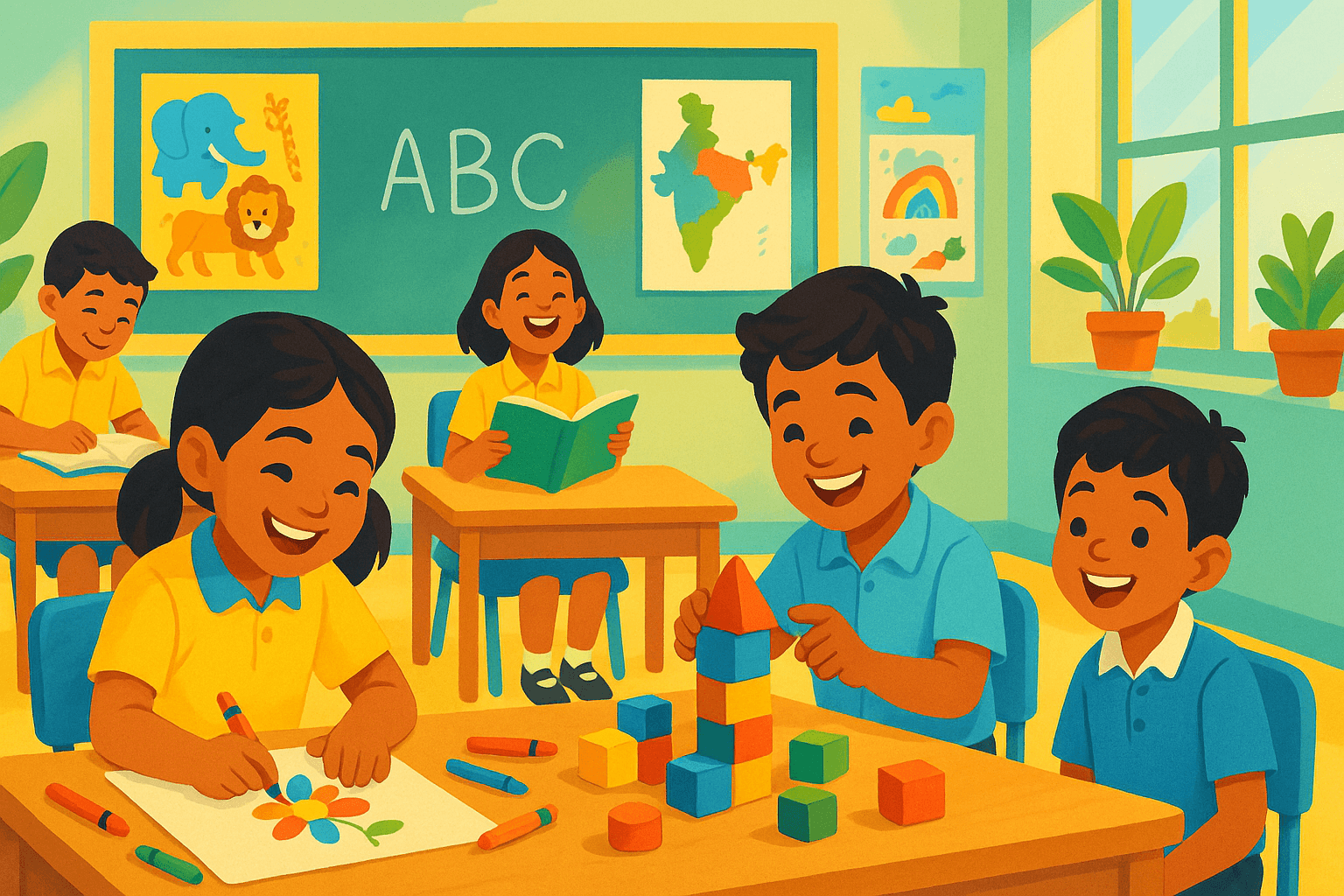Inside India’s Top-Rated Schools: The Secret to Creating Joyful Classrooms
Creating joyful classrooms isn’t just a trending idea, it's a necessity. In an academic environment often dominated by pressure and standardized testing, the top-rated schools in India are leading a transformation. They're shifting the focus from rote memorization to joyful, meaningful learning proving that when students enjoy what they learn, they don’t just score higher they thrive.
What Makes Classrooms Joyful in India’s Best Schools?
The best schools in India share one essential belief: children learn best when they feel happy, engaged, and respected. These schools aren’t only focused on high grades; they are nurturing confident, curious, and compassionate individuals.
Across the country, parents, educators, and administrators are noticing a shift. The goal isn’t just academic success, it's raising emotionally balanced, socially skilled, and intrinsically motivated learners. And India’s top schools are showing the way.
What the Best Schools Are Doing Differently
Here are some key strategies that leading schools use to foster joyful learning environments:
Integrated Arts-Based Learning
Subjects like math and history are taught using dance, drama, music, and visual arts.
Arts integration boosts retention, creativity, and critical thinking.
Mindfulness & Emotional Literacy
Incorporating yoga, meditation, and social-emotional learning into the school day.
Helps students develop focus, empathy, and emotional regulation.
Purpose-Driven Use of Technology
Use of interactive tools such as smart boards, gamified apps, and virtual labs strategically, not superficially.
Technology supports engagement and personalized learning paths.
Project-Based & Experiential Learning
Students learn by doing: science experiments, model UNs, field visits, and community projects.
Encourages real-world application and deeper understanding.
Student Voice & Choice
Students choose project topics, lead peer teaching, and co-create learning goals.
Builds motivation, accountability, and purpose.
These aren’t just isolated trends, they're part of a deliberate, research-backed shift toward joyful education.
The Research Behind Joyful Classrooms
Educational research strongly supports what the best schools are practicing every day:
A 2022 UNESCO report urges schools to prioritize happiness and inclusion over competition.
Harvard’s Project Zero finds that classrooms rooted in curiosity, play, and connection yield better outcomes.
India’s NEP 2020 champions joyful, experiential, and holistic learning, moving away from rote methods.
This isn’t just theory, it's transforming classrooms in India’s top CBSE and alternative schools right now.
Actionable Takeaways for Schools & Educators
Whether you’re a teacher in a small-town school or an urban administrator, joyful learning is achievable. Here’s how to start:
Start with Connection: Use morning circles, gratitude journaling, or mindfulness minutes to set a positive tone.
Use the Arts: Even in low-resource schools, integrate storytelling, role-play, or drawing into lessons.
Reimagine Assessment: Embrace formative assessments, peer reviews, and portfolios over rote testing.
Involve the Community: Invite local artists, parents, or leaders to co-create authentic learning experiences.
Spark Curiosity: Turn lessons into open-ended questions with multiple paths to discovery.
Celebrate Small Wins: Recognize effort, creativity, and collaboration not just grades.
Redefining Success in the Classroom
The secret to joyful classrooms isn’t fancy tech or expensive infrastructure. It’s a mindset shift.
India’s top-rated schools understand that joyful learning fuels lifelong learning. They are redefining success from pressure to purpose, stress to curiosity, and marks to meaning.
And the results are real. Students from these schools aren’t just passing exams, they're solving real problems, leading with empathy, and shaping a better world.
So if you’re a parent, teacher, or policymaker, ask the deeper question:
“Is this a place where children love to learn?”
FAQs: Joyful Learning in India’s Top Schools
1. What is joyful learning?
Joyful learning is an approach where students feel engaged, curious, and emotionally connected to what they learn. It emphasizes creativity, collaboration, and real-world relevance.
2. Which are some of the top-rated schools in India promoting joyful learning?
Institutions like SSRVM, The Riverside School (Ahmedabad), and The Valley School (Bengaluru) are recognized for their joyful and student-centric learning models.
3. How does joyful learning affect academic performance?
Happy, emotionally secure students tend to perform better academically, with improved problem-solving and interpersonal skills.
4. Can traditional schools adopt joyful learning?
Yes. Even without advanced infrastructure, schools can use storytelling, project-based learning, and positive classroom culture to make learning joyful.
5. What role does NEP 2020 play in supporting joyful learning?
NEP 2020 emphasizes experiential, flexible, and learner-centered education, reducing stress and prioritizing fun and engagement.
Explore more about joyful learning and holistic education at SSRVM.org — where tradition meets innovation in every joyful classroom.

